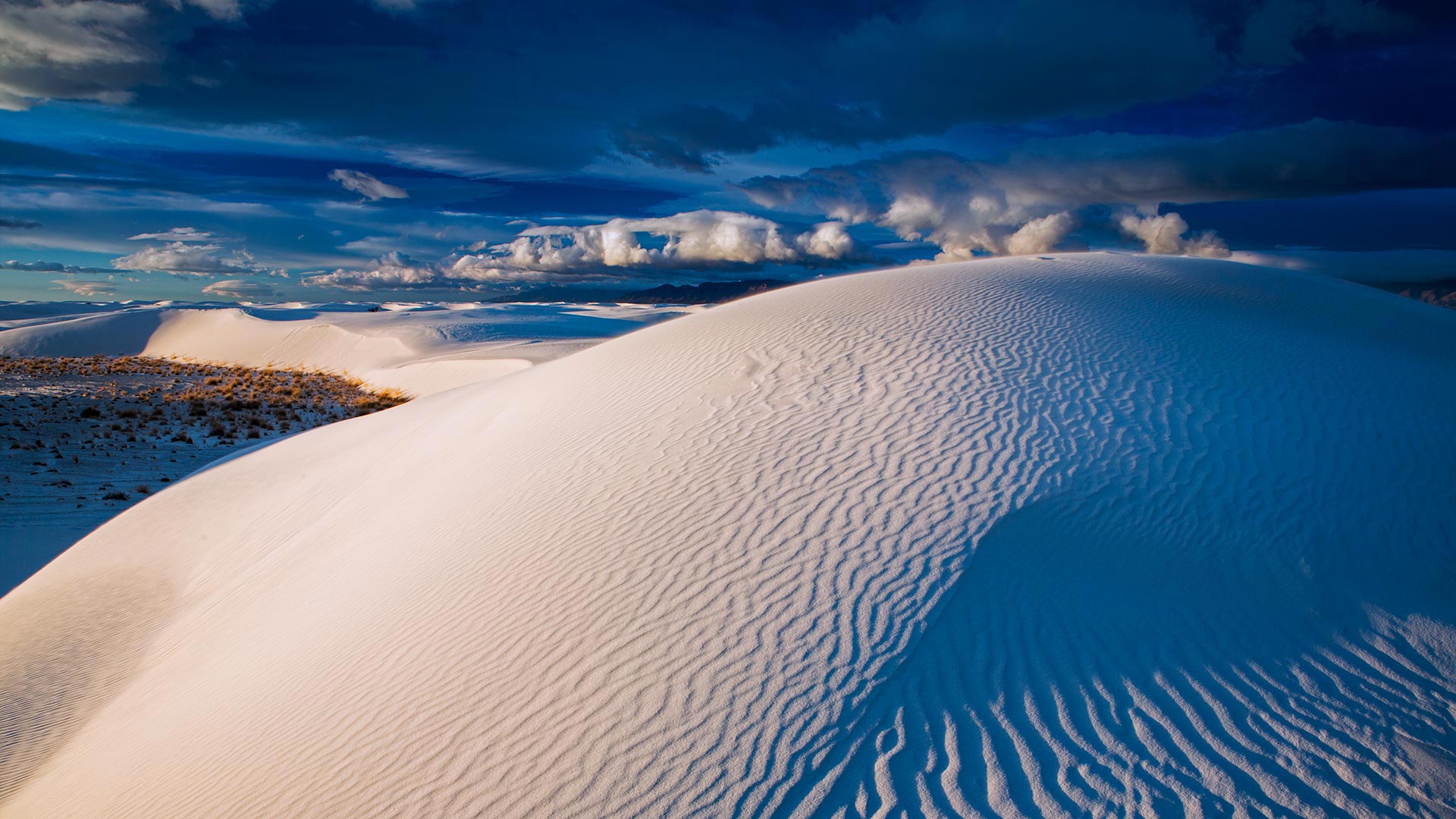白沙国家公园中的石膏沙丘,新墨西哥 Gypsum sand dunes, White Sands National Park, New Mexico (© Grant Kaye/Cavan Images)

白沙国家公园中的石膏沙丘,新墨西哥 Gypsum sand dunes, White Sands National Park, New Mexico (© Grant Kaye/Cavan Images)
Sands of time
At a quick glance, you might mistake these dunes for massive snowdrifts. Although they do make for great sledding, the tiny crystals that make up White Sands National Park are not ice but gypsum, a soft mineral often used to make plaster and chalk. The dune field became a national monument on this day in 1933 with a proclamation by President Herbert Hoover, which set aside nearly 150,000 acres for preservation. Recently, on December 20, 2019, President Trump signed legislation making it the 62nd designated national park in the National Park System.
The pearly sands compose the largest gypsum dune field in the world but cover just a fraction of southern New Mexico's Tularosa Basin. This vast desert valley—more extensive than some US states at 6,500 square miles—is mostly occupied by White Sands Missile Range. The active military installation—the US's largest by area—surrounds the national park and includes the Trinity site, where the first atomic bomb was detonated in 1945. That event altered the course of humanity's future, but the White Sands region is also defined by echoes from our very distant past: recently, scientists have used radar technology to zero in on prehistoric human, mammoth, and giant sloth footprints buried long ago beneath the shifting sands.
评论已关闭